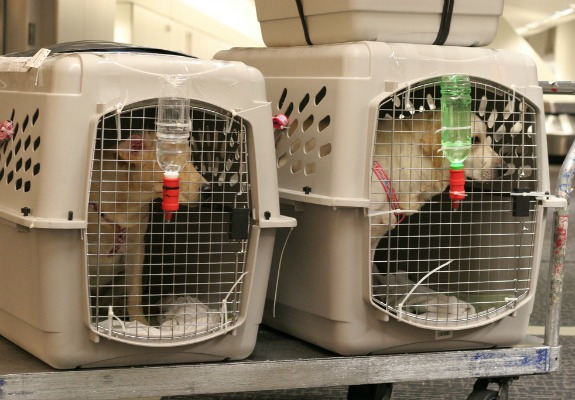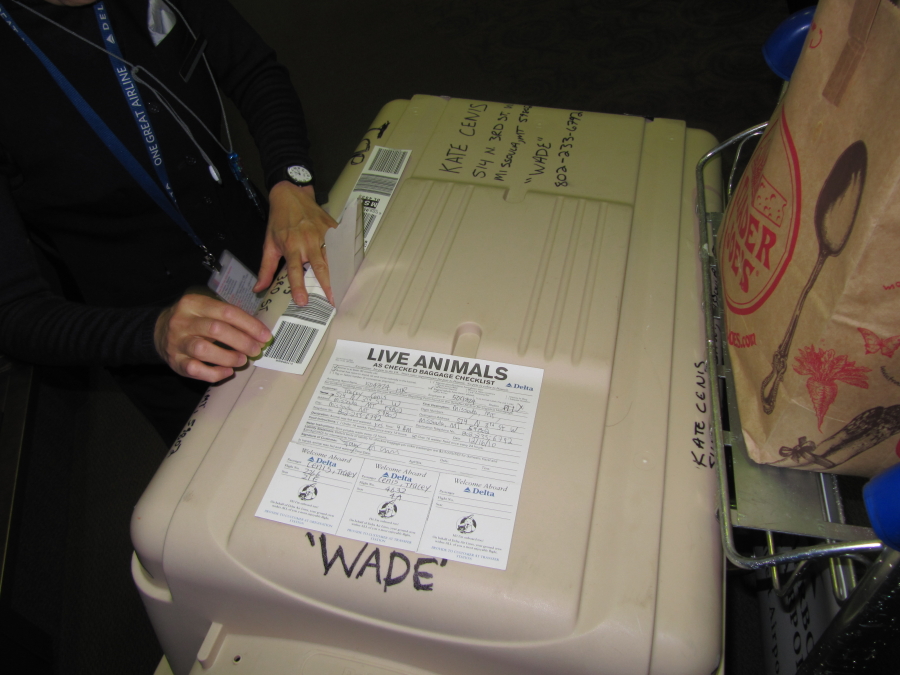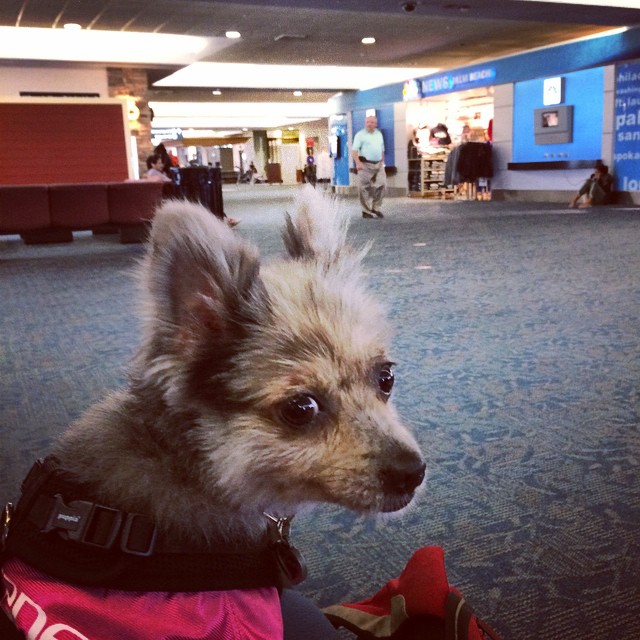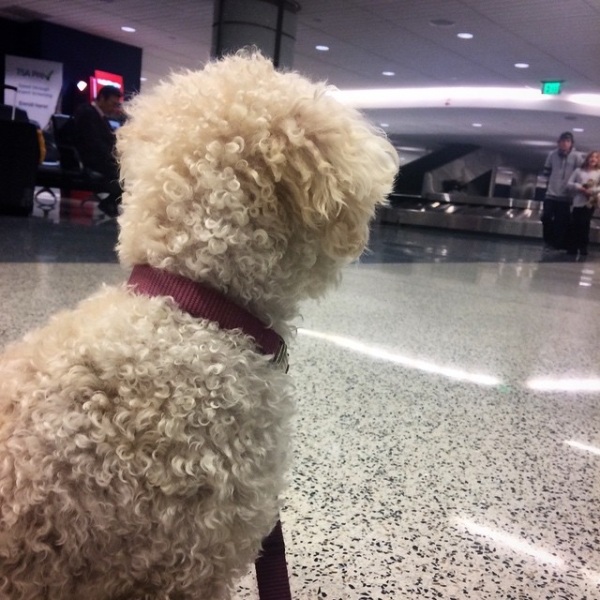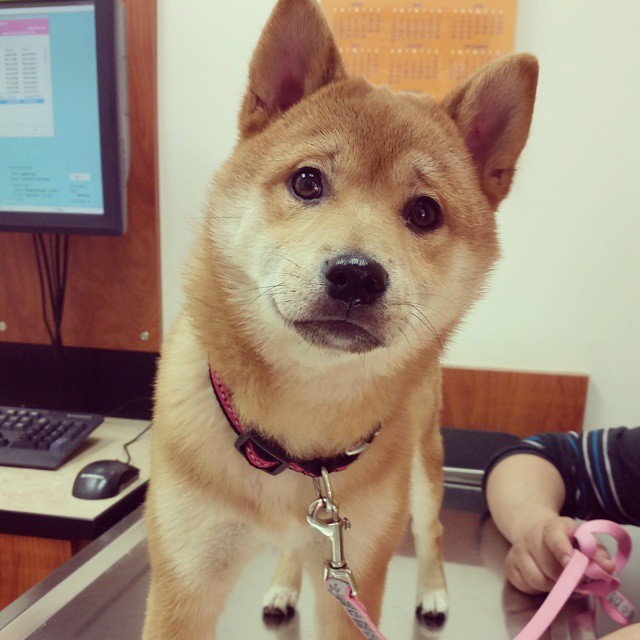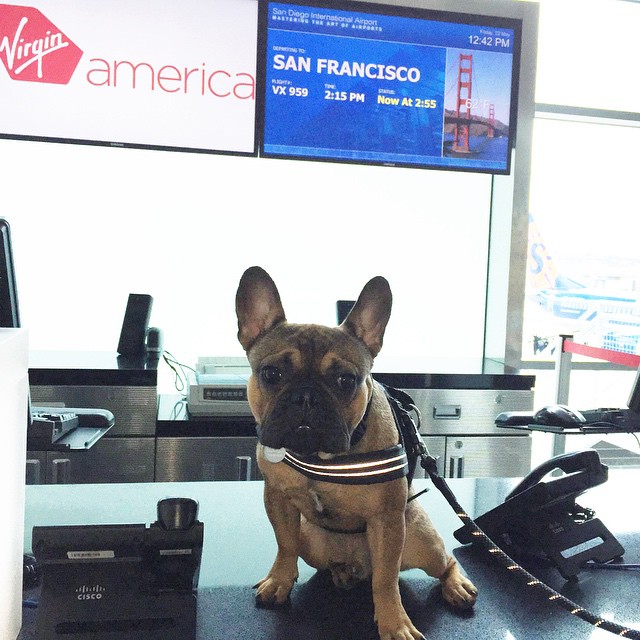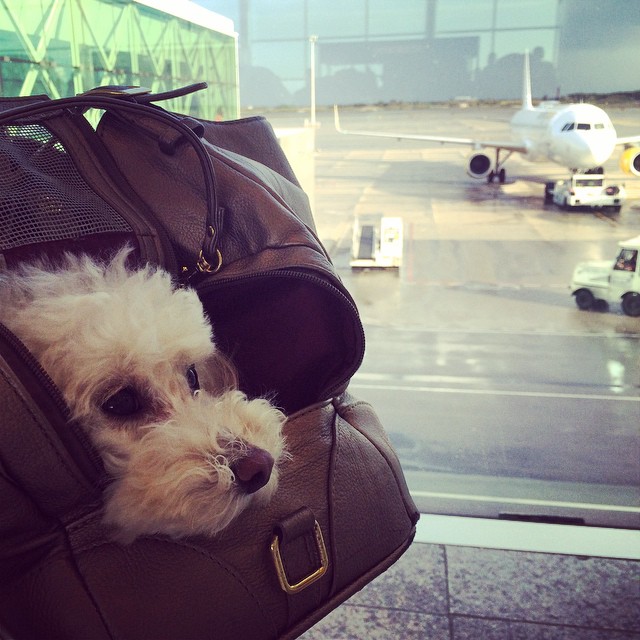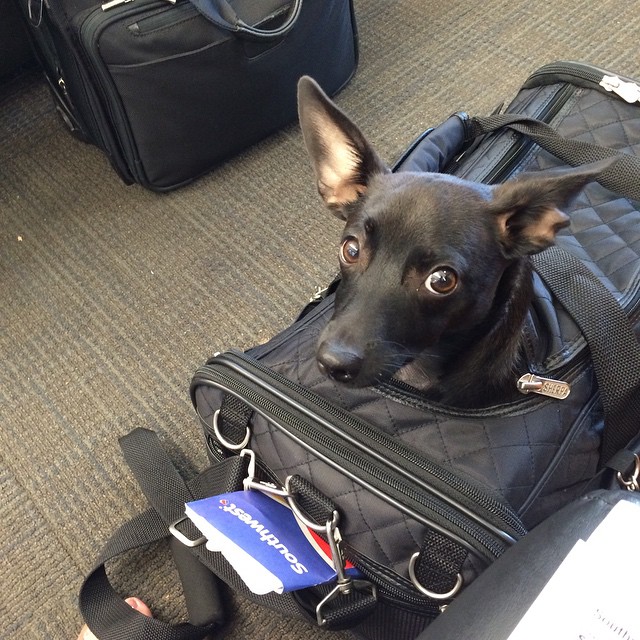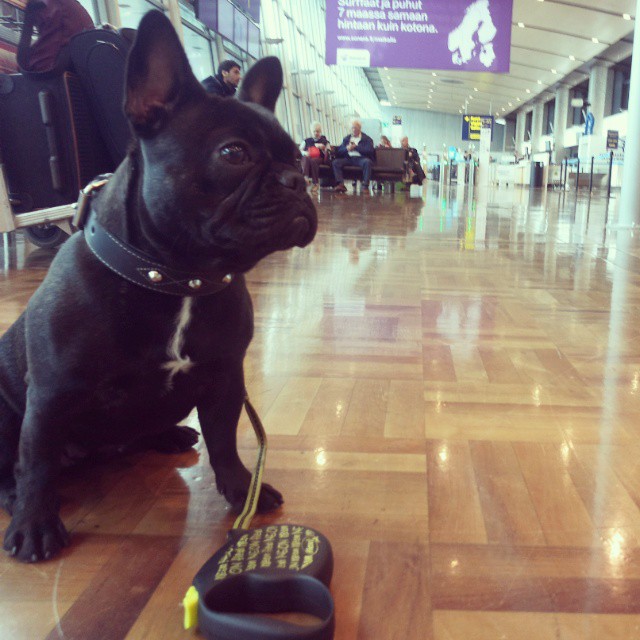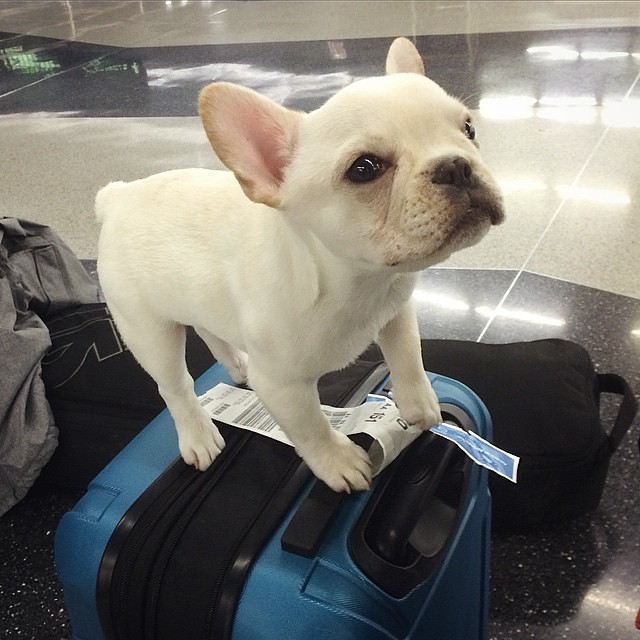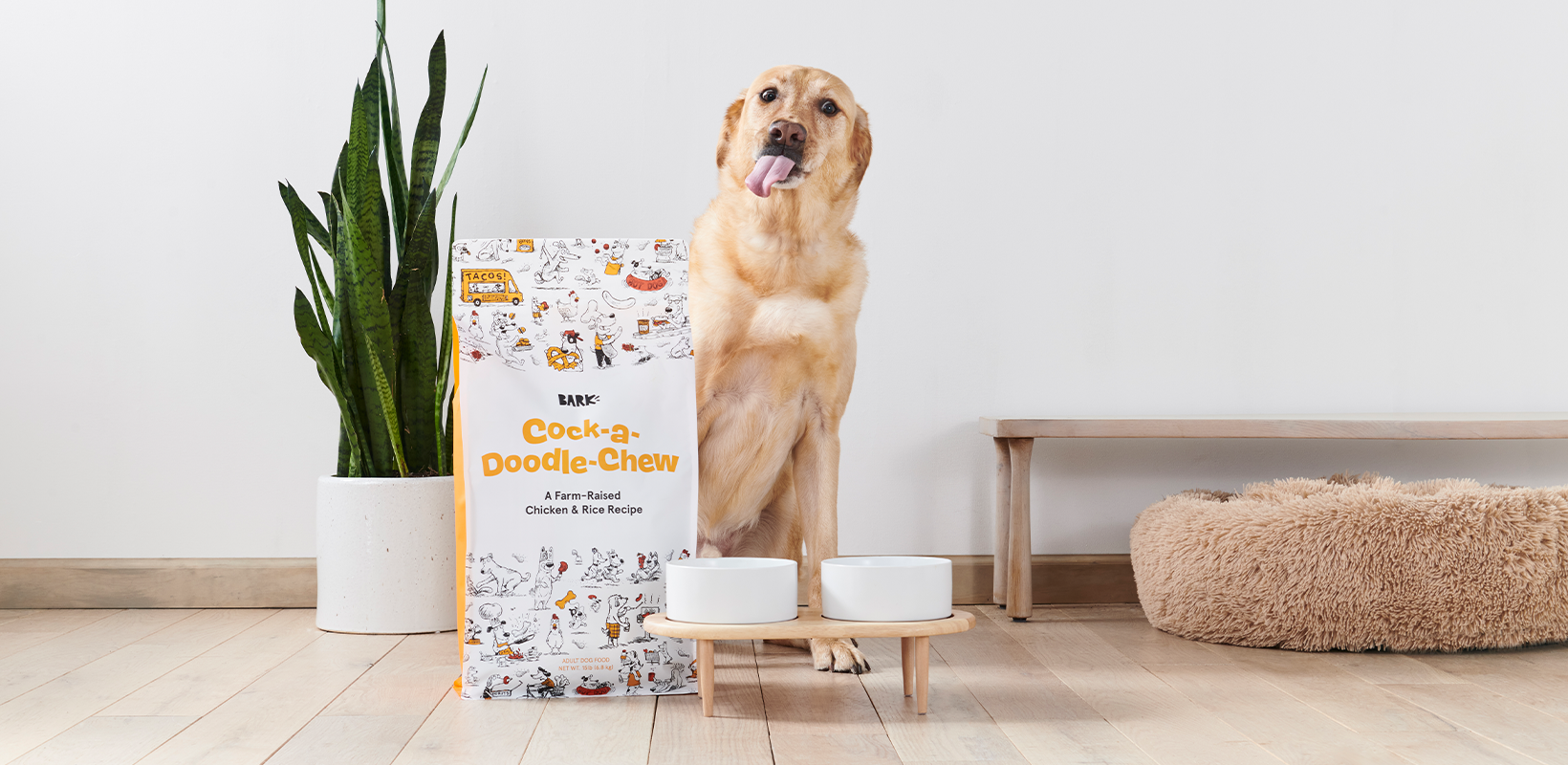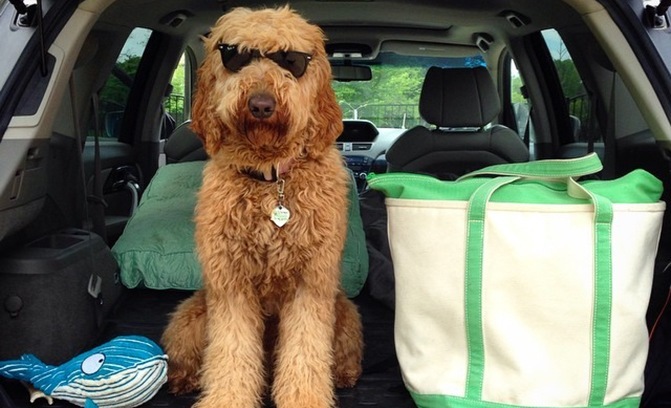This article comes from our pals at FIDO Friendly® magazine, the one magazine your dog will thank you for! Grab your copy today and leave no dog behind.® Use code “BarkPost” at checkout to get a 15% discount!
Some airlines go the extra mile for dogs. Midwest Airlines has a special Premier Pet Program that gives dogs extra attention when they fly below cabin. Your dog can even earn a free trip with every three paid round trips (or six paid one-way trips). If your Midwest Airlines flight is delayed, an employee from the airline will bring you to see your dog and let you take him out of the crate to stretch his legs and go to the bathroom.
No matter how prepared I felt, I was still nervous when flying with my black Labrador, Tasha, to Colorado. Is it too cold? Will she be thrown about? Does she have to go to the bathroom? These and other similar thoughts of concern floated about my mind until I finally saw her come out of the oversize luggage area. Her tail was wagging – we had made it!
Flying with your dog can be a stressful situation. Being unprepared to take a flight with Fido, where he will be placed down below as cargo, can add unnecessary stress when taking a trip. Here are 10 checklist items to keep the stress level down and both you and Fido happy!
There may be more to add with each specific case, i.e. going to a different country or having more than one dog, but this is a good starting point.
1. Kennel = den
First and foremost, have an airline-approved crate, and be sure that Fido thinks of this crate as his den. You may need to spend time getting your dog comfortable with being in his crate for long periods of time. There will also be a lot of loud noises on the plane and strangers walking around in the cargo loading area.
Here is a suggested exercise to get Fido crate-trained for air travel:
Depending on the size of your dog, you may need two strong people to help with this exercise. Have Fido inside his crate and pick the crate up and walk it a little ways. Place the crate inside your car. While he is still inside the crate, drive to a park or busy location. Again, have two people carry the crate out of the car with your dog still inside. This way, Fido can get used to loud noises and a busy environment while being handled inside his crate.
2. Outfit the crate
There are certain items that you will want to place on the outside and inside of the crate to make it ready for travel. Place a few bright orange LIVE ANIMAL stickers on the outside of the crate. Most airlines will do this as protocol, but it doesn’t hurt to have them on the crate before you arrive at the airport to let people know there is a dog inside.
The next thing is to type up a one-page profile of your dog that includes your contact information with cell phone number. Include a letter that states something to this effect: “Hi, I’m Tasha. I am a nice Labrador Retriever, and I don’t bite. Please contact my parents if I am lost, and I’ll probably need to be fed and walked if our flight is delayed so I can relieve myself. I’ll be forever grateful!” Tape this to the outside of the crate, and title it something like: “If I’m lost or delayed.” Also, make sure water and food dishes are attached to the inside of the crate. You may want to include a couple of soft toys that your dog loves and maybe a T-shirt that has your scent. Be sure to tape a small bag of food and a leash to the top of the crate.
3. Flight time
Check the length of the flight and try to book a direct fight when at all possible to avoid plane changes or delays, not to mention lost luggage. It is important to match the length of the flight with that of your dog’s temperament and what he can handle. Whether Fido is being shipped as cargo or is riding in the cabin will help determine what Fido will experience during the flight. Consider whether Fido can be in his crate for the duration of the flight.
4. Different birds
Each airline has different requirements and policies where flying Fido is concerned. Check with the airline’s policies when flying with Fido regarding the following: appropriate feed times, when to arrive at the airport, kennel requirements, required veterinarian records, costs involved and weight limits. There may be more requirements for different airlines.
Check with the airline to make sure that where Fido is placed is climate controlled and pressurized. Most airlines will do this, and if they do not then you will want to choose another airline that does pressurize and control the climate where your dog will be located. Also, when flying in certain weather, you will want to know if your dog will be exposed to the elements or sheltered before the flight.
5. Clearance Clarence
This is one of the most important steps: get a clean bill of health certificate from your veterinarian for Fido to fly. Your dog cannot fly without veterinarian records stating that he is in good health. Most airlines require veterinarian health certificate records no more than 30 days out. Some airlines even require the certificate date no more than 10 days from your departure date.
This is important to take into account not only for your departure date, but your return date as well. Fido will need the same 30-day advance clean bill of health on the return flight. If Fido has his clean bill of health check-up on day 1, and you fly on day 20, your return flight must depart before day 30. Otherwise, your dog will have to get another check-up before returning.
6. Feeding time
Your dog may or may not get nervous about the flight. It is a good rule of thumb to feed your dog anywhere from four to six hours before your departure time. Give him minimal water to avoid a full bladder.
7. Exercise a go-go
Every dog has a different level of energy. A young Labrador runs on high octane and will need to expend this energy before being cooped up in his kennel for a long flight. You will want to check with the airport you are flying out of as many locations are now installing dog-run areas. An airport that has an onsite dog area is a perfect place to play with your dog and keep his spirits light just before placing him in his crate. This will also give him a good chance to relieve himself before the flight.
Do not sedate your pet. The American Veterinary Medical Association (AVMA) and the Independent Pet and Animal Transportation Association (IPATA) do NOT recommend tranquilizing your pet prior to flight. Sedation could lead to injury if your dog’s crate moves during the flight and your dog is unable to brace himself. The increased altitude may further cause respiratory and cardiovascular problems for sedated animals.
8. Go with the flow of a timeline
Departure day has arrived, and it is important to stay focused. It is best to make a timeline itinerary that you can follow. This will ensure that your dog receives the proper care and attention needed to ensure a a safe flight. The night before, place Fido’s collar on him with your cell phone number on his tag.
9. Nervous Nellie
You have decided to make the flight with your dog, but sometimes no matter how safe something feels, we can still get a little nervous about sending Fido down to the belly of the plane. Even though we know the probability of nothing happening to him is in our favor, the separation and inability to see what his environment is like can be unnerving. It is important to give plenty of reassuring hugs and kisses to your dog. When you’re calm and confident, then your pet will follow your lead and realize there is nothing to worry about.
If you are emotional about the separation and the trip, then your pet may pick up on this and become concerned about the adventure. This is where exercising your dog with play before the trip helps settle the nerves. By keeping the mood light, you can relieve any tension that may occur due to the situation. Once on board the aircraft, ask the flight attendant to confirm that your dog is loaded and secure. They may be able to give your dog a little extra water in the dish that you provided in his crate before take-off. This will reassure you that your dog is with you on the flight. This is especially important if you have a connecting flight.
10. Reunited
Before taking the flight, ask the ticket person where you will be picking up your dog. Almost all airlines will have your dog come out of the oversize luggage area, while some may have you go to their parking or cargo building separate from the baggage claim building. A short drive may be required.
I can’t imagine going anywhere without Tasha if I can help it. She adds so much to my adventures that I feel like something is missing if she is not by my side. In Colorado, half the fun was seeing her play in the snow and bounce everywhere with excitement as if to say: “What’s next?! What’s next?!” Taking the extra time to become mentally and practically prepared for a trip involving out of the ordinary logistics will make all the difference to you and your dog.
For more FIDO Friendly content, follow them on Facebook!


